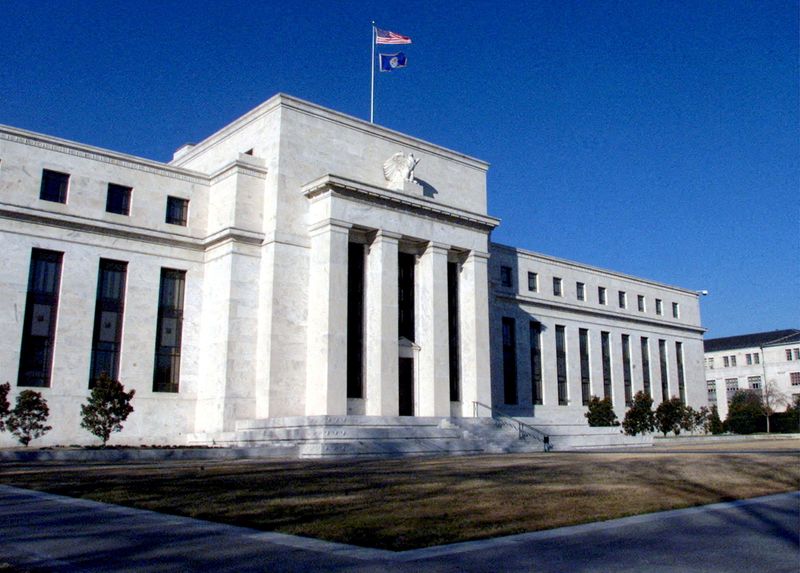By Howard Schneider
WASHINGTON (Reuters) -A growing sense of uncertainty around the path of the U.S. economy, with volatile data and tightening financial markets posing risks to growth, pushed Federal Reserve policymakers into a newly cautious stance last month, a position reaffirmed by top U.S. central bank officials in a series of statements this week.
Minutes of the Fed's Sept. 19-20 meeting showed policymakers wrestling with risks they agreed were no longer just about inflation, with world energy and food markets perhaps threatening a new surge in prices, but slowing global growth, labor strikes and tightening financial markets possibly clamping down on the economy in unexpected, and job-killing ways.
"A vast majority of participants continued to judge the future path of the economy as highly uncertain," the minutes said, listing the plethora of reasons "supporting the case for proceeding carefully" before raising the Fed's benchmark overnight interest rate again.
The point was amplified by comments this week from top Fed officials who noted that the recent rise in U.S. Treasury yields may well take the place of further increases in the policy rate, serving to slow the economy, and inflation, beyond any further central bank action.
The moves in the bond market began after the Fed's last rate increase in July, was noted by a staff analysis in the September meeting that showed a rise in inflation-adjusted "real" rates of interest, and was reflected in recent comments by Fed Vice Chair Philip Jefferson and influential Governor Christopher Waller.
"The financial markets are tightening up and they are going to do some of the work for us ... We are just keeping a very close eye on that. We will see how those higher rates feed into what we do on policy in the coming months," said Waller, who was interviewed on Wednesday by former U.S. House of Representatives Speaker Paul Ryan at a high-profile Republican event in Utah. "We're in this position where we kind of watch and see what happens."
The U.S. central bank agreed at its meeting last month to hold rates steady even as a 12-7 majority indicated in new projections that one more hike might be needed by the end of the year to ensure inflation returns to the Fed's 2% goal.
Investors since that meeting have steadily discounted the likelihood of any further hikes. After the release of the minutes on Wednesday, they gave a less than 10% chance of an increase in the policy rate at the Oct. 31 -Nov. 1 meeting and a roughly 26% chance at the Dec. 12-13 session, according to CME Group's (NASDAQ:CME) FedWatch Tool.
SHIFTING DEBATE
Though policymakers are publicly aligned that there is still "work to do" with key measures of annual inflation remaining well above 3%, several have in recent days leaned into the possibility that rates may not in fact need to go higher.
Indeed, the minutes showed that even with a majority saying one further increase was likely, debate was shifting towards a focus on how long to keep "restrictive" policy in place rather than on how much higher rates may need to go.
According to the minutes, "several participants" felt that "the focus of monetary policy decisions and communications should shift from how high to raise the policy rate to how long to hold the policy rate at restrictive levels."

For now, "all participants agreed that policy should remain restrictive for some time" until it is clear inflation "is moving down sustainably toward its objective."
The release on Thursday of the consumer price index report for September could add to the impetus for the Fed to remain on hold. Waller said that if recent month-to-month inflation trends continue, it would mean "we're pretty much back to our target."